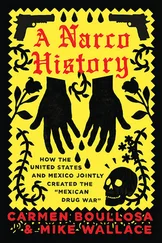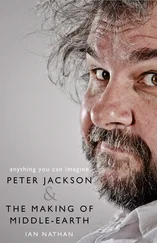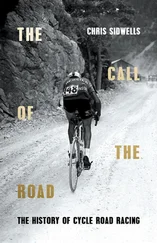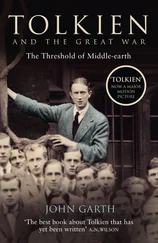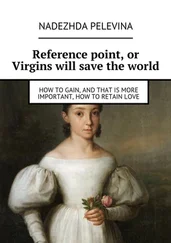(3) In this entire process the thing which was perhaps eroded most of all was the philologists’ sense of a line between imagination and reality. The whole of their science conditioned them to the acceptance of what one might call ‘*-’ or ‘asterisk-reality’, that which no longer existed but could with 100 per cent certainty be inferred.
(4) In a sense, the non-existence of the most desired objects of study created a romance of its own. If we had the lost Gothic ‘Ermanaric-lays’ we might think little of them, but find them lame, crude or brutal; quite likely, the very first version of the Nibelungenlied (composed in the ashes of the Burgundian kingdom) was just an attempt by the poet to cheer himself up. But the fact that these things do not exist, hover forever on the fringe of sight, makes them more tantalising and the references to them more thrilling. There is a book by R. M. Wilson called The Lost Literature of Medieval England , which Tolkien must often have read – see note 24. The Lost Literature of Dark-Age Europe , however, would be a title almost too painful for words. Still, it would cover plenty of material. The best lines about King Arthur are not the long explicit descriptions of the later medieval romances, but those in the almost deliberately uninformative Welsh triads, e.g. from the Black Book of Carmarthen:
Bet y March, bet y Guythur,
bet y Gugaun Cledyfrut;
anoeth bid bet y Arthur
‘There is a grave for March, a grave for Gwythur,
a grave for Gwgawn Red-sword;
the world’s wonder a grave for Arthur.’ 23
As for Old English, my guess is that the most stirring lines to Tolkien must have come, not even from Beowulf , but from the fragment Waldere , where an unknown speaker reminds the hero that his sword was given by Theodoric to Widia ‘because Wayland’s child let him out of captivity, hurried him out of the hands of the monsters’. Somewhere in the Dark Ages, this seems to suggest, there must have been a legend, a story of how the Gothic king *Thiudoreiks was stolen away to the land of giants, to be rescued after long adventures by his faithful retainers Widia and Hildebrand. Why did the giants take him, where and how did they live, what were their relations with humanity? Once upon a time many people must have known the answers: the story survives in a decadent form in the medieval German romances of Das Eckenlied , Sigenot , Laurin and others, while there is an intensely irritating scrap of a Middle English poem on the subject tucked into a dull sermon on humility:
Summe sende ylues, and summe sende nadderes:
summe sende nikeres, the bi den watere wunien.
Nister man nenne, bute Ildebrand onne.
‘Some sent elves, and some sent serpents,
some sent sea-monsters, that live by the water.
No one knew any of them, but Hildebrand alone.’ 24
What must it have been like in Old English – a poem not about monsters erupting on humanity, as in Beowulf , but about men going into the heart of the monsterworld, for adventures in the ‘Ettenmoors’ themselves! But fate had snatched that prospect (almost) into utter oblivion.
The wilderness of dragons, the shrewedness of apes
Probably the most disheartening conclusion to be drawn from this brief review of intellectual history is that the history of English studies in British and American universities has been forever marred by incomprehension and missed opportunities. Professor D. J. Palmer has shown how the birth of the Oxford English School in particular was accompanied by desperate struggles between language and literature, philologists and critics, ending not in mutual illumination but in a compromise demarcation of interests. 25 Quite possibly the philologists were most to blame in this. Peter Ganz, Professor of German at Oxford, has pointed out that Jacob Grimm’s chief intellectual defect was a refusal to generalise. 26 Indeed as he neared the end of his Teutonic Mythology (four volumes in the translation of J. S. Stallybrass, and 1887 pages) Grimm wrote a ‘Preface’ referring to himself as a gleaner, whose observations he left to ‘him who, standing on my shoulders, shall hereafter get into full swing the harvesting of this great field’. 27 But actually there was no field left to harvest; while few would relish the thought of spending a lifetime putting someone else’s observations in order, without the fun of first collecting them! So the impetus of philology ran out in a series of Primers and Readers and Grammars, endless academic brickmaking without any sign of an architect. No wonder the early critics got annoyed. On the other hand they showed little magnanimity, or even curiosity, once they got control.
The overt result for the young Tolkien must have been that, when he returned from World War I to Oxford University in 1919, he found himself once again in a battle being fought by two sides from deep entrenchments, and one whose stalemates were as unlikely to be broken as the greater ones of Ypres or the Somme by frontal offensives. Still, both sides kept trying them. Tolkien did his best to make peace. His 1930 ‘manifesto’ led at least to the elimination of some academic ‘No Man’s Land’, during the syllabus campaign of 1951 he even emerged from his trench to fraternise with the enemy (till C. S. Lewis stopped him, see Inklings , pp. 229–30). But a covert result may have been that he gave up hope, at least from time to time, of penetrating other people’s vested interests and making them understand the appeal of the subjects he would have liked to teach. His jokes on the subject get wryer, his gestures of rapprochement – ‘the boundary line between linguistic and literary history is as imaginary as the equator – a certain heat is observable, perhaps, as either is approached’ ( YWES 6, p. 59) or ‘the “pure philologist who cannot do literature” … is as rare as the unicorn’ (‘OES’, p. 782) – these become more perfunctory and finally disappear. What was possibly a natural bent towards reserve became more pronounced; it is hard to escape the feeling that in some of the interviews given after celebrity had arrived Tolkien was still liable to give easy or unnoticedly ambiguous answers to save the trouble of explaining something which he knew had proved incomprehensible many times before. The Hobbit and The Lord of the Rings had made his point, whether it had been intellectually apprehended or not; and the hostile or even malignant reaction it evoked from so many on the ‘lit.’ side was only what he might have expected.
Indeed, to go back to the animus The Lord of the Rings created: it is striking that next to the books’ sheer success the thing that irritated reviewers most was their author’s obstinate insistence on talking about language as if it might be a subject of interest. ‘The invention of languages is the foundation’, Tolkien had said. ‘The “stories” were made rather to provide a world for the languages than the reverse’ ( Letters , p. 219). ‘Invention’ of course comes from Latin invenire , ‘to find’; its older sense, as Tolkien knew perfectly well, was ‘discovery’. If one were to say of nineteenth-century philology that ‘the discovery of languages was its foundation’, one would be stating literal truth; as often, probably, Tolkien was playing with words, juxtaposing the languages he had made up out of his own head with those that others had found or ‘reconstructed’ all over the world, so aligning himself yet again with his professional inheritance. Meanwhile the second sentence, though no doubt personally true again, might almost have been said of Ermanaric or Theodoric or the nineteenth-century vision of a ‘historical’ King Arthur. An element of generalisation underlay the particular application to Tolkien’s own case.
Читать дальше

